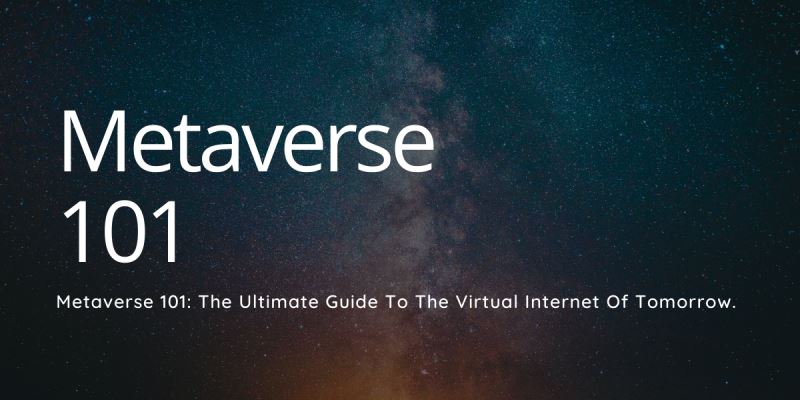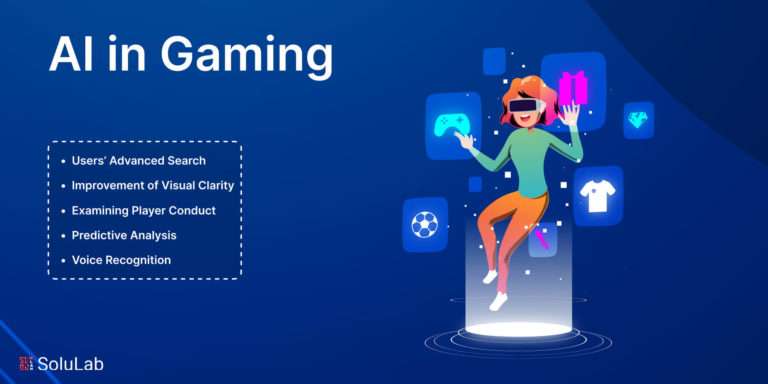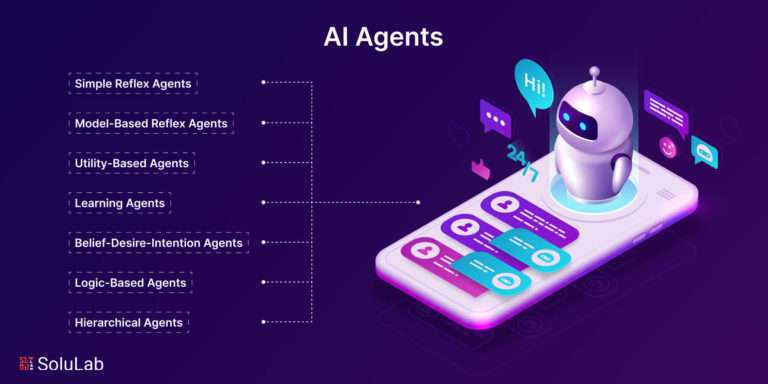In its most basic sense, the term “metaverse” means “beyond the universe.” But what exactly is the metaverse?
“Increasing border permeability between digital and physical environments is one way to phrase it.”
Three factors are included in this literal approach to the metaverse. To begin with, it’s a technology that allows digital content to be placed on top of real-world objects and experiences. The digital world and the actual world are intertwined here.
Second, a hardware device is used in the metaverse to make the actual world more dynamic and engaging for the user. Digital content is used to allow users to manage the content that can be seen in the virtual environment and interact with it.
As a third component, it includes information about both the real environment (such as a particular place, the location of a business, or a merchandise suggestion) and other information about the user. This data will be gathered through the Internet and from computers that learn from a user’s daily activities. Siri (as in iOS powered by Apple) and Alexa (as in Android powered by Amazon) are two simple examples of gadgets and software whose learning is based on a user’s daily behaviors. A user’s experience is enhanced by obtaining real-time information instantaneously and virtually via the technologies being used by users in the real world, while in the meantime data is being collected and applied.
The application of real-world characteristics to a completely online environment is a less literal but no less significant method to understand the metaverse than the use of analogies. A metaverse ecosystem can apply real-world elements to a virtual environment in the same manner that digital information can be used and applied to the real world. Players engaged in a virtual game environment may walk around a digital London or New Delhi metropolis, viewing digital representations of real-life roads and skyscrapers around the city.
Users may visit a virtual Apple shop to browse and purchase digital representations of Apple items that can be delivered to the user’s physical house in real life. In many ways, this would be an expansion of what we currently know as standard e-commerce stores. However, as visual technologies and design capabilities develop businesses will be able to construct metaverse worlds that not only imitate but also enhance the real-life experience. When a new product is released, there may be no wait outside of the metaverse Apple shop.
How does the metaverse work?
ts earliest form was a web of digital environments that avatars could move between. The modern Metaverse includes social, immersive VR systems that are compatible with enormous multiplayer online video games, open game worlds, and AR collaborative environments.
A gadget in most cases is required to connect users to the metaverse. This gadget might be a pair of glasses, a head-mounted gadget with something like the camera mounted on it, or a brand-new invention that will do the job. Such technologies however are not always required to participate in the virtual world, but they may certainly enhance the experience of users. By merging all of the parts and showing the interactable virtual things in real life, “wearing” a gadget connects the user to the metaverse. To put this notion into practice, imagine waking up in the morning, putting on your goggles, and entering the metaverse. Sounds like science fiction, doesn’t it?
It is founded on the convergence of technologies that allow for multimodal interactions with virtual environments, digital items, and people, such as virtual reality (VR) and augmented reality (AR) (AR). As a result, the Metaverse is a web of social, networked immersive experiences on permanent multiuser platforms. It enables real-time, seamless embodied user communication and dynamic interactions with digital information.
Virtual information that the users can view and interact with will display as they walk along the street. It’s possible that you’re walking to the railway station when you receive a virtual message informing you of significant flight delays. You can then choose a faster alternative route, such as taking a bus or carpooling. The interactivity implies that you will be able to respond to virtual items; everything will be presented in real-time, in front of you, in the physical world.
Users communicate with their own artificial intelligence (AI) assistant, who will proactively locate and will readily provide the information which they want virtually, in the actual world. Users may then view, navigate through, and interact with those things.
Applications and Future
We are all aware of the impact that globalization has had on global civilization as a whole. Products created everywhere in the world reach practically every corner of the globe, contributing to the improvement of our level of living. When virtual worlds merge to form one Metaverse, the same, if not greater, the effect can be predicted. Let’s take a look at how the Metaverse can affect many aspects of our lives.
Shopping and Business
Traditional purchasing presents several problems, which is why online shopping has now become a common habit. When users purchase online they don’t have to bother about closing hours or waiting in a long queue to get their needs met. With Web Virtual Reality a technology that will soon be available in everyday browsers, making it easier than ever to check out the things of the user’s interest.
Virtual stores will offer users the identical feeling of being at a shopping mall, and there will be no time or geographical limitations. How about taking a virtual excursion through a retail outlet in China or the United Kingdom while staying in your room? Furthermore, in each metaverse store, there will be bespoke digital sales assistants that can speak any language to give users one-on-one support.
Users will also be able to see in-depth data such as how the items were created, where they were made, what materials were used, how long they are expected to endure, and so on. In some cases, users may even be able to experience how the product will behave under certain circumstances and settings. For example, if any user is interested in buying a motorcycle from a shop in England, a virtual experience will help to know how it would perform in the user’s city depending on the roads and traffic! Furthermore, as the amount of data collected daily grows, clever digital assistants will be able to instantaneously give the users things that they may like while visiting a certain store. Virtual intelligent assistants, such as Siri and Alexa now, will play a significant role in the future.
Users may just supply a shopping list or set a regular timetable, and the virtual assistant will go to the appropriate store in the metaverse and conduct the shopping. Users won’t even have to consider purchasing everyday items. And as the Internet of Things expands, users will be able to link their everyday appliances such as a refrigerator, coffee machine, and so on to the Internet and they will function and perform assigned tasks automatically without any human involvement!
Health Care
With the emergence of human interaction with computers, virtual reality, and the metaverse, visiting doctors and health professionals will be simpler and more efficient than before for patients. Users may enter into any hospital unit in the metaverse and seek the services of any doctor around the globe. Doctors can inject sensors inside the user’s body to quickly detect and cure the illness with a basic computer program instead of complicated operations or surgeries, thanks to communication technologies such as smart dust!
Doctors will be able to appoint virtual healthcare attendants for the patients, who will remind the user about their medications and physical activity. Patients will receive live and quick feedback on how their everyday activities, such as meals, working, physical activities, and sleeping, influence their health. When it comes to healthcare, time and awareness are crucial. As a result, with technology, we will be able to detect any run-of-the-mill threat long before it becomes a harm to us.
Education
Consider the following scenario: a Management student would be able to participate in a meeting where an agreement is being negotiated. Users may participate in business arrangements hosted by industry professionals anywhere in the world while remaining in their own classroom, giving them a flavor of how the actual business world operates.
Similarly, medical students can participate in surgery being performed by skilled doctors anywhere in the globe, broadening their expertise. Science students may tour virtual space facilities and even go on a Mars mission! Students and educators from all around the world will be able to easily collaborate with one another and enhance their educational standards. Students may also simply present their final year projects and have them evaluated by professionals from all across the world. With the arrival of Virtual Reality on the web, individuals may also experience any period in history or even investigate the molecular and atomic components of any life.
Advertising
Advertising has historically been about seeing rather than experiencing, but this is about to change. Today, we all know that advertisements are everywhere, and the majority of them are so obnoxious that we avoid a large percentage of them for good. However, with the kind of in-depth and detailed data like such as the user’s age, purchase history, brands followed on social media, a network of friends, and so on the that is being collected through gadgets such as smartphones and others that being commonly used today, advertisers will soon be able to provide users with a more personalized experience of advertisement.
Advertisers may even learn which commercials users prefer using gadgets such as smartwatches that measure their heart rate. Instead of the current advertising system, in the metaverse, every advertisement or commercial the user encounter will be based on who they are! Users may browse adverts on the move and remain up to date on the changes and improvements that are in the works for their favorite product.
The advertisement’s content and the story will also vary when a user makes changes to the design, layout, and other elements of a product. Furthermore, sponsors will be able to provide the user with virtual tickets to significant events such as the World Cup or a huge live performance. Every major event will be sponsored by a company.
Conclusion
Whether we want it or not, we must recognize that life today is almost technology-driven. Even our perspective of reality shifts as a result of significant upheaval. We simply cannot imagine a future without social networks like Facebook and Twitter! Wait… Consider a world without the internet. What about the one that doesn’t use computers? We just cannot imagine any life, can we? Such has been the influence of technology on humans.
Metaverse, with its great possibilities, will have a great impact and shall play a significant role in human life in the future. Let us hope that, like all of its brilliant predecessors, it will make us wiser and our lives easier.





